Kaukasis cookbook: Recipes from fish with pistachios to quince stuffed with lamb
Banishing the myth that food from the Caucasus is bland and boring, Olia Hercules’s second book shows off the fruits of Georgia, Azerbaijan and beyond
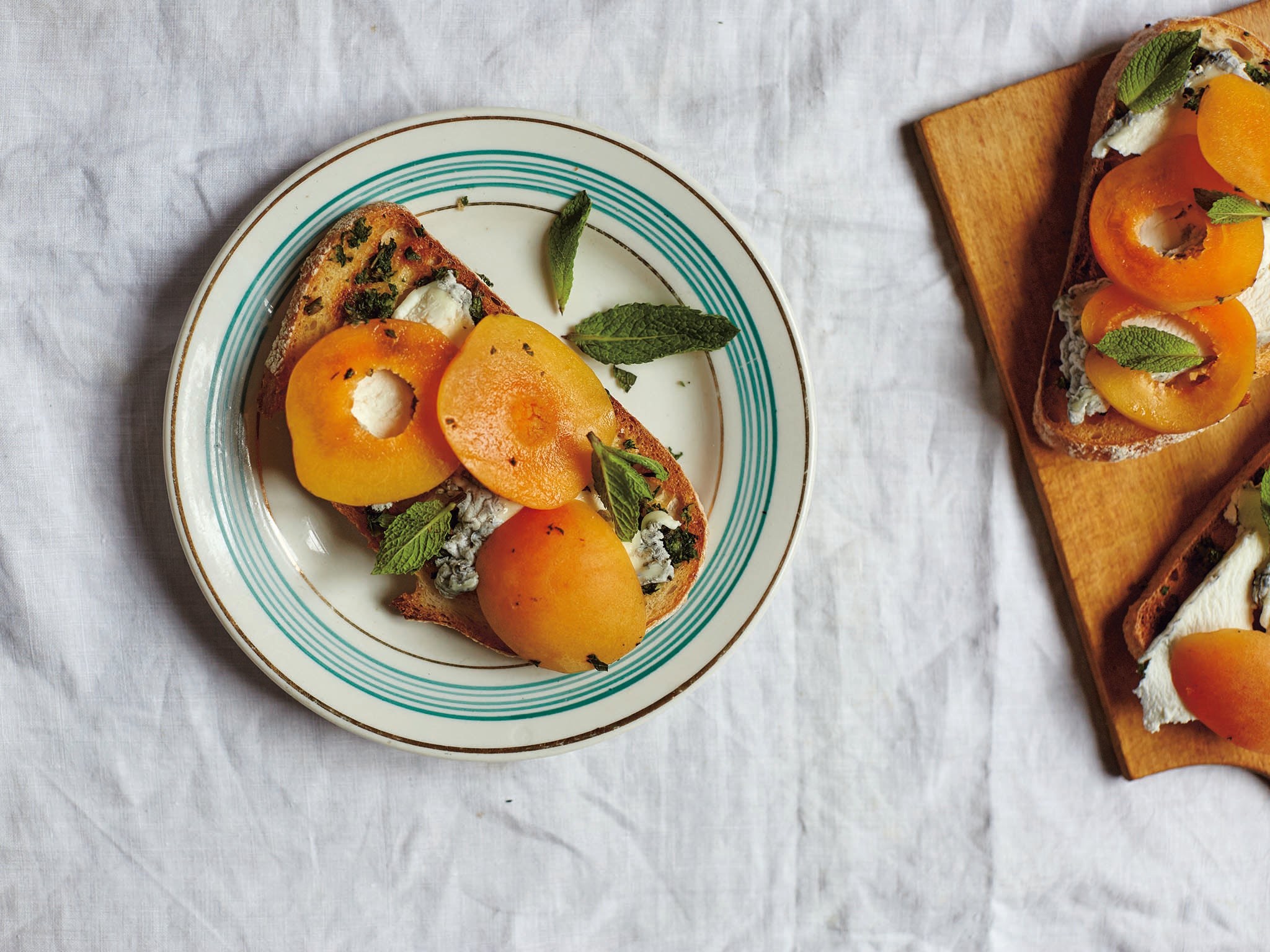
Your support helps us to tell the story
From reproductive rights to climate change to Big Tech, The Independent is on the ground when the story is developing. Whether it's investigating the financials of Elon Musk's pro-Trump PAC or producing our latest documentary, 'The A Word', which shines a light on the American women fighting for reproductive rights, we know how important it is to parse out the facts from the messaging.
At such a critical moment in US history, we need reporters on the ground. Your donation allows us to keep sending journalists to speak to both sides of the story.
The Independent is trusted by Americans across the entire political spectrum. And unlike many other quality news outlets, we choose not to lock Americans out of our reporting and analysis with paywalls. We believe quality journalism should be available to everyone, paid for by those who can afford it.
Your support makes all the difference.Fruit, mint ‘adjika and dairy’
Georgia is a country that manages to completely mess with your head. Had I not had my son, I probably would have moved there at the first opportunity. Truth be told, I actually considered moving even with my toddler son. But when I was back in London, the trance I was in lifted and I came to my senses. This didn’t happen to Ének Peterson, a young American who decided to take a short trip around Georgia but stayed on and is now cooking tasty, creative dishes in Vino Underground, a natural wine bar in Tbilisi. This is my version of a bruschetta she served me. It is one of the best combinations around. Sweet fruit, tangy cheese, spicy and fresh mint paste – nothing short of genius. Any seasonal fruit will work, such as Sharon fruit, pears or apples in winter, or nectarines or apricots in the summer. My Italian friends now say it’s their favourite bruschetta. I hope they won’t be alone. Eat as a casual snack or make loads of little ones and feed a party
Serves 5 as a snack
5 thin slices of sourdough bread
1 tbsp mint adjika (see below)
50g mild goats’ cheese or labneh
2 firm apricots, stoned and sliced, or 1 Sharon fruit, thinly sliced
Mint leaves, to garnish
Toast the bread, then brush with the mint adjika – be careful, as it’s really salty and should be used sparingly, as a seasoning.
Top with the goats’ cheese or labneh and your choice of fruit and sprinkle over some mint.
Mint adjika
This is my favourite paste of all time. It is so easy to make, keeps for months and is incredibly versatile. A lot of women in western Georgia would have a jar of this in their refrigerator. They mix it through stretchy cheese when they make their national western Georgian dish called elardji, and it does indeed go so well with creamy fresh cheeses, such as in the fruit. Brush a smidgen on to some sourdough toast topped with good mozzarella. Alternatively, stir it through boiled new potatoes.
Makes about 375ml
125g spearmint (or ordinary mint), stalks and all
10 green chillies, half-deseeded
5 garlic cloves
20g sea salt flakes
Blitz everything together in a powerful blender or food processor to a paste, or bash it lovingly using a pestle and mortar if you want to feel like an authentic Georgian bebia (Grandma). This is a wet flavoured salt, so use sparingly. Store in the fridge for up to 1 month.
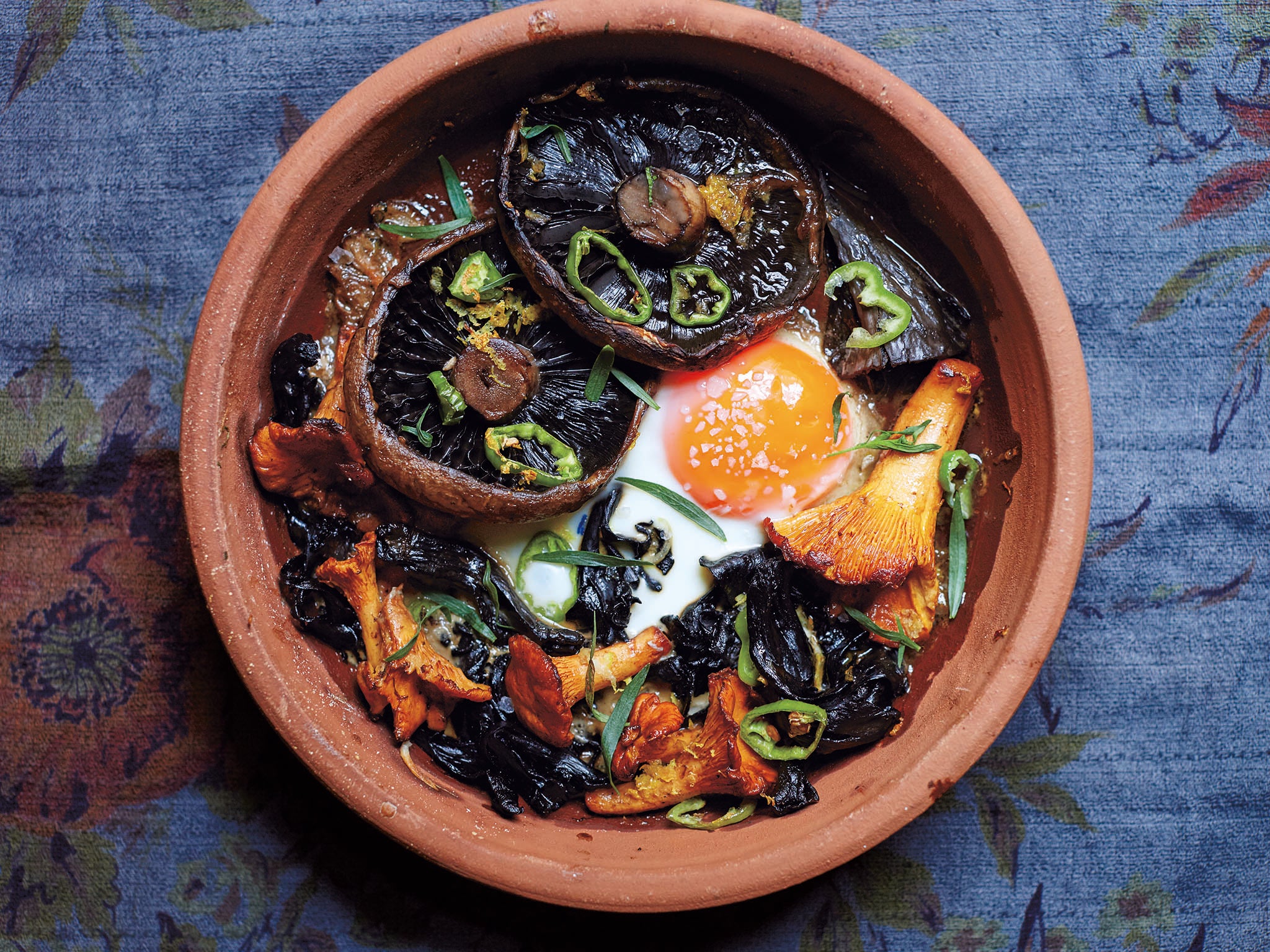
Gia’s mushrooms and egg
It was in the town of Signagi in the eastern Georgian region of Kakheti where I tried some of the most delicious and inventive, without being contrived, cooking. “Good food doesn’t have to be complicated, overworked,” says Gia Rokashvili, head chef at an incredibly beautiful restaurant (of natural wine fame) called Pheasant’s Tears. And I agree with him wholeheartedly. With a few wonderful ingredients, knowledge of tradition and a creative mind like Gia’s, Georgian cooking is taken to another level. This dish was so simple but I would award it and the others that we tasted numerous stars and accolades. Just find excellent mushrooms, really good eggs, some aromatics and a tiny bit of spice, and you have a beauty of a dish.
Serves 2 as a sharing starter
50g unsalted butter
1 tbsp olive oil
2 garlic cloves, sliced
2 field mushrooms, brushed clean
200g mushrooms such as trompettes, chanterelles or field mushrooms, brushed clean
1 egg
1 green chilli, thinly sliced (keep the seeds if you like heat)
A few sprigs of rosemary in winter or tarragon in summer
Sea salt flakes and freshly ground black pepper
Preheat the oven to 180C. Heat the butter and oil in an ovenproof dish in the oven, or in an ovenproof frying pan on the hob. Add the garlic and let it sizzle for a moment, just enough to release its aroma, then add all the mushrooms and spoon over the sizzling fat to cover them. Cook in the oven for 10 minutes, or cook on the hob over a medium-low heat, shaking from time to time, for about 5 minutes until the mushrooms have softened.
Crack the egg into the middle of the dish or pan and sprinkle over the chilli, herbs and some salt and pepper. Cook in the oven for 5-10 minutes until the white is set and the yolk is cooked to your liking.
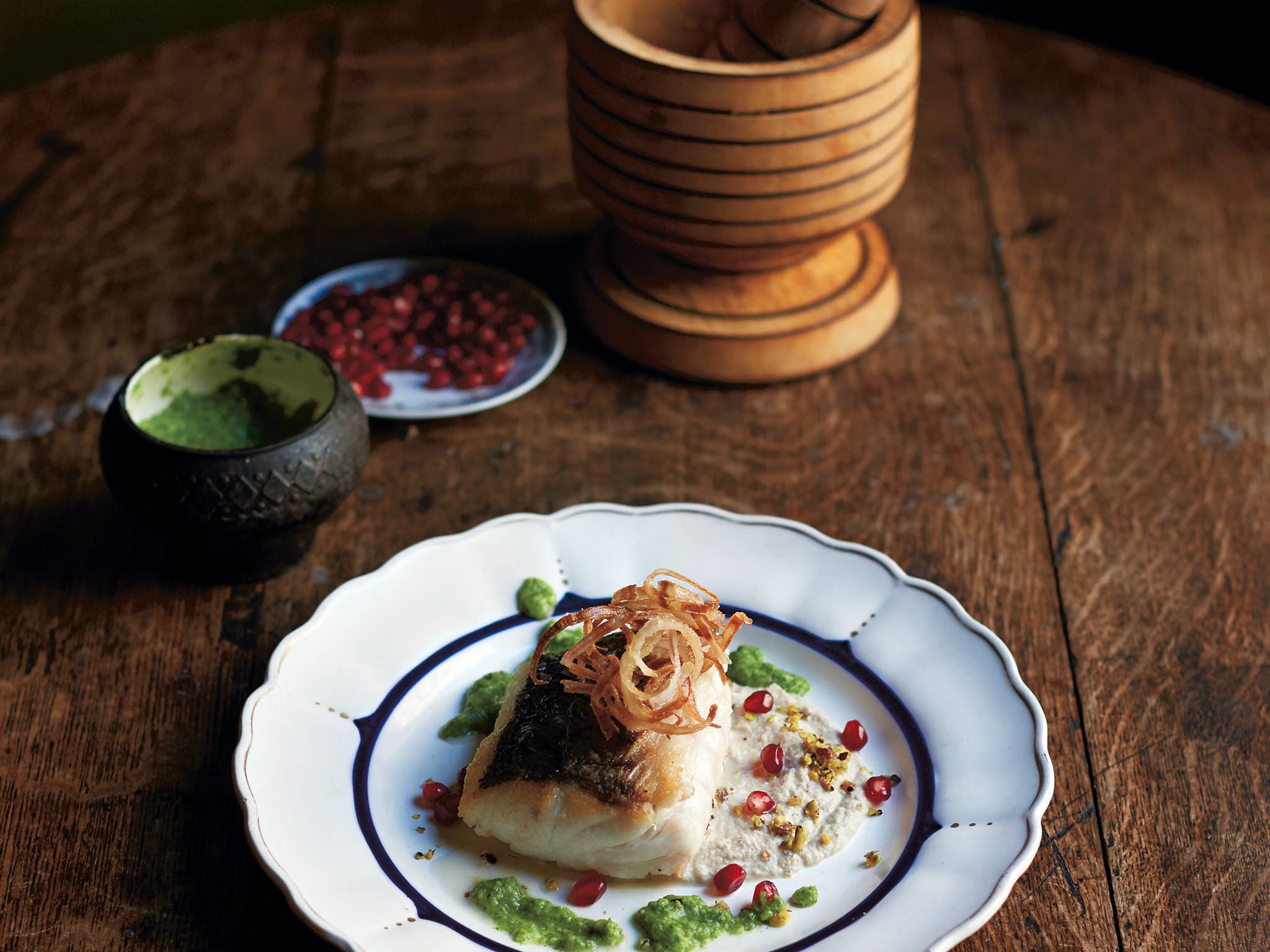
Fish with pistachio and cauliflower sauce and ‘kindzmari’
This dish came out of the numerous Georgian supper clubs I have staged in Britain. I love the creaminess of Georgian nut sauces like satsivi (made from walnut paste), but also the acidity and aroma of kindzmari (kindzi is coriander and dzmari is vinegar) so this is a great way to enjoy a bit of both. If you are cooking for a dinner party and want to dress it up in style, you can also add something crispy on top as I’ve suggested below. If you want to simplify the recipe, simply drop one of the sauces – a good fish would be equally delicious with either a dollop of the nutty cauliflower mixture or a slick of kindzmari and some simple boiled potatoes, depending on whether your preference is for creamy comfort or a spicy kick. But if you do have the time and the will, this is not a difficult dish to prepare, especially if you aim to impress someone.
Serves 4
2 tbsps vegetable oil
4 hake fillets
Pistachio and cauliflower sauce
½ small cauliflower, divided into florets
2 shallots, peeled and halved
25g unsalted butter
200ml warm chicken, fish or vegetable stock
Small pinch of saffron threads
70g pistachios or walnuts, toasted
Sea salt flakes and freshly ground
Black pepper
Kindzmari
25g bunch of coriander, stalks and all, roughly chopped
2 green chillies, roughly chopped
1 garlic clove, roughly chopped
2 tbsp white wine vinegar
1 tbsp maple syrup or clear honey
sea salt flakes, to taste
To serve (if you want to be fancy)
Floured and shallow-fried shallot rings (or toasted flaked almonds or crispy seaweed)
Herbs or micro leaves
Pomegranate seeds
For the pistachio and cauliflower sauce
Preheat the oven to 180C. Pop the cauliflower florets and halved shallots on to a baking tray, dot around the butter and pour over half the chicken stock. Season well with salt. Crush the saffron with a little sea salt using a pestle and mortar and add that as well. Roast the vegetables for about 30 minutes until the liquid has gone and they look soft and caramelised. If the cauliflower catches a little bit at the edges, it’s not a problem, and the same applies to the shallots – you need them to have colour for the sauce to be flavoursome.
Grind the pistachios in a powerful food processor (or use an electric spice or coffee grinder) into a powder. Then blitz the shallots and cauliflower with the ground nuts in a blender or food processor until the mixture is super smooth, adding some more of the warm stock if the mixture needs help to blend. It should be the consistency of double cream, but if your blender or processor is not strong enough to produce a completely smooth sauce, don’t worry – it will still taste good. Taste and season some more if you feel that it’s still under-seasoned.
For the kindzmari sauce
Blitz all the ingredients in (again) a powerful blender or food processor. The resulting mixture should be quite liquid but smooth, without any bits of stalk, and the flavour should be primarily sour but also spicy and a tiny bit sweet. You can drop the maple syrup or honey for a more authentically tart version, but I like the hint of sweetness here.
The sauce may turn a dark, muddy green, but who cares as long as it’s delicious. To cook the hake, preheat the oven to 200C. Heat the oil in a large frying pan with an ovenproof handle. Season the fish skin with salt and pop it down into the hot oil. After a minute, shake the pan gently so that the skin doesn’t get stuck. Cook for 2 minutes, then flip the fish over and transfer the pan to the oven for a further 5-7 minutes (depending on the thickness of your fillet) to finish cooking it.
To serve the fancy way, put some slightly warmed cauliflower sauce on a plate, dot around a spoonful of kindzmari and then add the hot fish skin side up. Scatter over the shallots or almonds, seaweed, herbs or pomegranate seed garnish, if using. Variations I’ve used pistachios here because I love them, although walnuts would be more traditional but I don’t see a problem with using any nut you fancy and I struggle to find good walnuts in the UK – just use the best you can get hold of. Quality is what’s important here. A piece of expertly cooked pork fillet would not be out of place here instead of the fish. I have also made this using scallops, or if you want to go vegetarian, fry a cauliflower steak in some butter and a little oil until caramelised.
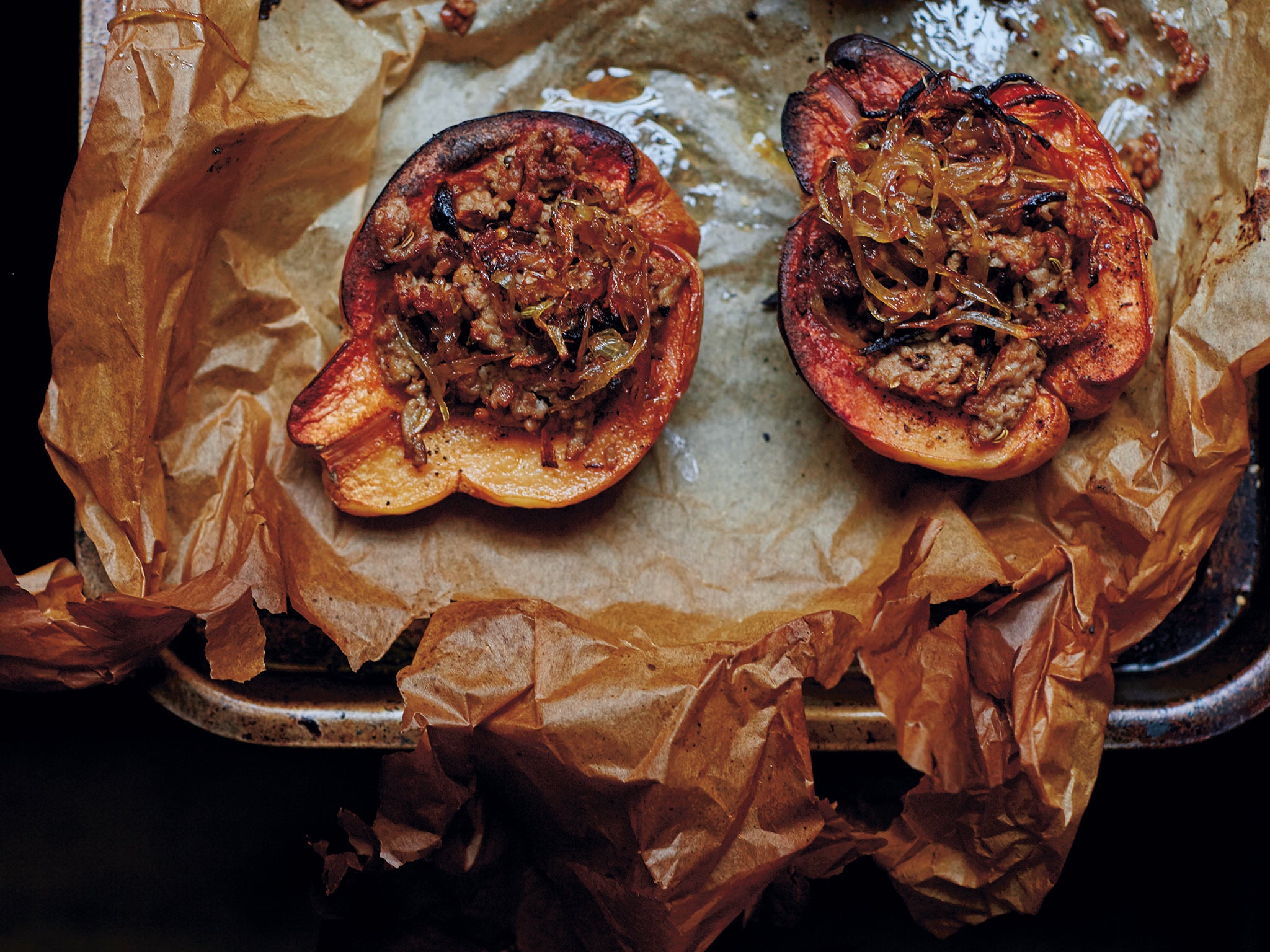
Quince stuffed with lamb and caramelised shallots
Dolma comes in so many forms. In fact, anything stuffed with a bit of meat and rice can actually be called dolma, or tolma in Armenian, including aubergines, peppers, tomatoes, potatoes, vine leaves, quince leaves (!) and quince itself. To me, quince is the queen of fruit. Astringent, tannic and sour when raw (try thin, raw slices sprinkled with salt and sumac), it becomes the most luxuriously tasting aromatic thing when cooked. And despite being very sweet, it lends itself so naturally to savoury fillings. Look for it in Middle Eastern shops come the autumn, and do not give this dish a miss. Serve it with a simple chicory and pomegranate salad.
Serves 2
4 ripe quinces
2 tbsp olive oil
400g coarsely minced lamb
2 tsp coriander seeds, toasted and crushed
2 tsp fennel seeds, toasted and crushed
2 tsp cumin seeds, toasted and crushed
15g unsalted butter
6 shallots, sliced
Sea salt flakes and freshly ground
Black pepper
Preheat the oven to 200C. Slice the quinces in half lengthways and remove the cores, scooping out quite a bit of the flesh in order to be able to fit in the lamb. Place the quince halves cut side up on a baking tray. Drizzle over and rub in 1 tbsp of the oil and sprinkle over some salt and a little pepper. Cover with foil and bake for 30 minutes.
Heat the other tablespoon of oil in a frying pan and fry the lamb over a high heat for a few minutes along with the spices and some salt and pepper. Take the meat out and set aside.
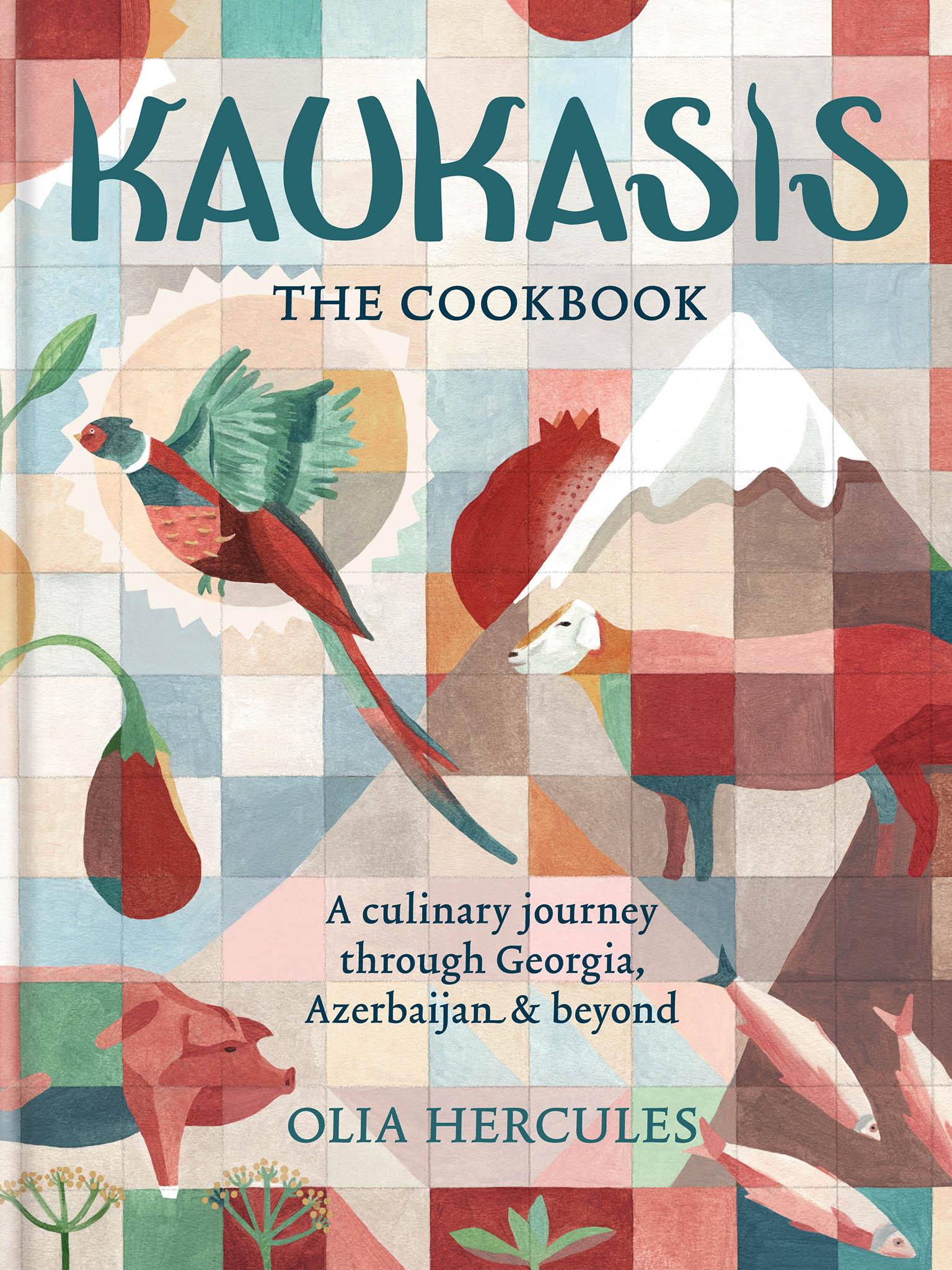
Add the butter and the shallots to the pan, lower the heat and cook them slowly until they soften and start turning golden. This can take up to 15 minutes. Remove the foil from the quince and bake for a further 15 minutes.
Stuff the baked quinces with the lamb mixture and top with the shallots. Return to the oven for about 10 minutes until the quince is soft. Your house will be permeated with a sweet, warming aroma.
‘Kaukasis’ by Olia Hercules is published by Mitchell Beazley, £25 (octopusbooks.co.uk)
Join our commenting forum
Join thought-provoking conversations, follow other Independent readers and see their replies
Comments